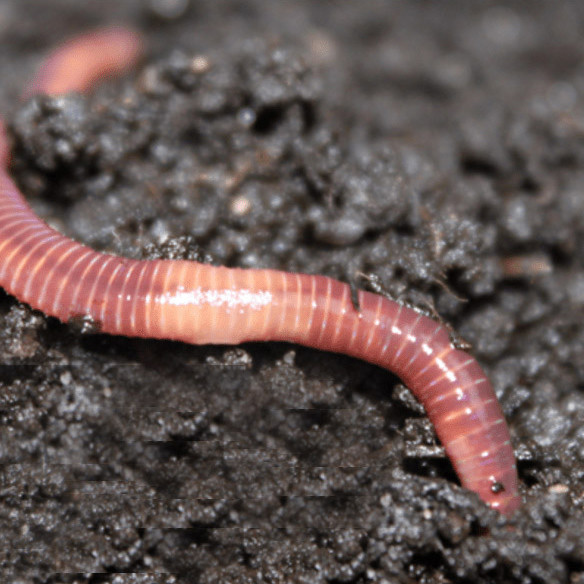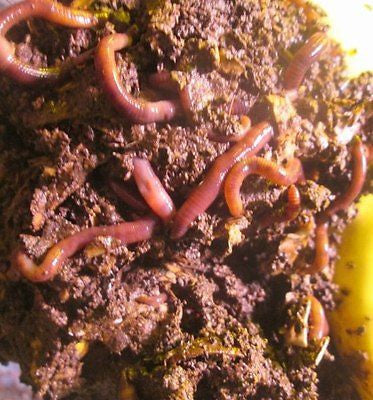Organic farming red worms: Guide to thriving setups
Organic farming red worms: Guide to thriving setups
Blog Article
The Role of Red Wigglers in Sustainable Gardening
The integration of red wigglers right into lasting gardening techniques provides an engaging method to boosting dirt health and wellness and reducing organic waste. The effects of utilizing red wigglers extend beyond mere composting; their function in shaping a much more sustainable future warrants a deeper exploration of their advantages and useful applications.
Comprehending Red Wigglers
Red wigglers, medically recognized as Eisenia fetida, are a types of earthworm renowned for their duty in sustainable gardening and composting methods - red wigglers. These worms prosper in decomposing natural matter, making them especially reliable in transforming kitchen scraps and lawn waste into nutrient-rich compost. Unlike conventional earthworms, red wigglers have a higher resistance for varying moisture levels and can prosper in environments with plentiful natural product
(buy red wiggler worms)Classically, red wigglers are smaller than their earthworm equivalents, normally gauging in between 3 to 4 inches in size. They possess a reddish-brown coloration and have a fractional body framework that assists in their burrowing and feeding tasks. These organisms are hermaphroditic, meaning each specific possesses both male and women reproductive body organs, which allows for effective population development under optimum conditions.
The environment choices of red wigglers consist of moist, dark environments abundant in organic web content, such as compost containers or worm ranches. Their environmental role expands past composting; they are integral in freshening the dirt and helping with vitamins and mineral biking, which eventually adds to much healthier yard communities. red wigglers. Recognizing the biology and behavior of red wigglers is necessary for those looking for to carry out reliable vermicomposting in lasting gardening
Advantages of Vermicomposting
Vermicomposting deals countless benefits that enhance lasting gardening practices and contribute to ecological health. Among the main advantages is the transformation of natural waste right into nutrient-rich compost, which improves dirt framework and fertility. The castings generated by red wigglers are packed with valuable microbes and crucial nutrients, making them a superb all-natural plant food.
In addition, vermicomposting substantially reduces garbage dump waste. By drawing away kitchen scraps and lawn waste from garbage dumps, this method not just decreases methane discharges-- a potent greenhouse gas-- but likewise promotes a circular economic situation, where waste is repurposed as a resource.
An additional benefit is the enhancement of soil aeration and water drainage (red wigglers). The burrowing task of red wigglers creates channels in the soil, permitting air and water to penetrate even more quickly, hence fostering a healthier origin system for plants
Additionally, vermicomposting can be done on a little scale, making it obtainable for urban gardeners and those with limited room. This approach urges ecological stewardship and awareness, as people come to be more engaged with their waste management methods. Ultimately, vermicomposting stands for a sustainable, reliable, and environment-friendly strategy to horticulture that benefits both plants and the earth.
Just How to Start Vermicomposting
Starting your own vermicomposting system can be a gratifying endeavor that improves your lasting gardening practices. To check it out begin, select a proper container, such as a plastic bin or wood box, with excellent drainage and air flow. The size will rely on the quantity of cooking area scraps you produce; a bin of 10-14 gallons generally is adequate for a family.
Next, prepare the bedding material. Shredded paper, cardboard, and coconut coir are superb choices, giving a comfortable environment for the red wigglers. Go for a bed linens depth of concerning 4-6 inches, which ought to be moist yet not soaked.
As soon as the bed linens is developed, introduce your worms. Red wigglers (Eisenia fetida) are the most suitable for composting. Start with roughly one pound of worms for every single 2-3 pounds of cooking area scraps weekly.
Begin including kitchen waste, staying clear of meat, dairy products, and oily foods, as these can bring in bugs and produce smells. Routinely keep track of the container's moisture degrees and temperature, ensuring it continues to be within the suitable array for worm activity. With these initial actions, you'll be well on your way to developing nutrient-rich garden compost for your garden.
Preserving a Healthy And Balanced Worm Bin
A thriving worm container needs regular treatment and attention to keep an ideal environment for the red wigglers. Trick variables to check include dampness degrees, temperature, and food supply. Keeping a wetness level comparable to a wrung-out sponge is crucial; way too much water can lead to anaerobic problems, while too little can dry out the worms.
Temperature level is likewise critical, as red wigglers thrive in a series of 55 to 77 levels Fahrenheit. Severe temperatures can worry the worms, possibly leading to mortality. Therefore, positioning the bin in a climate-controlled location or using protecting materials can aid regulate temperature changes.

Last but not least, oygenation is vital. On a regular basis transforming the bed linen and utilizing a fork or shovel can protect against compaction and advertise air movement, ensuring a healthy, flourishing setting for the red wigglers. By sticking to these practices, gardeners can preserve an efficient worm container that supports sustainable horticulture efforts.
Influence On Soil Wellness
Enhancing dirt health via the usage of red wigglers is a basic aspect of lasting horticulture. These worms, known clinically as Eisenia fetida, play a vital role in boosting soil framework and fertility. By eating organic issue, red wigglers break down intricate materials right into easier substances, a procedure known as vermicomposting. Completion item, worm castings, is rich in crucial nutrients, including nitrogen, phosphorus, and potassium, which are important for plant development.

(red wiggler worms for sale near me)Research studies have actually revealed that soils enriched with worm castings show raised microbial activity and boosted fertility, leading to higher crop yields. By integrating red wigglers right into horticulture techniques, gardeners not only enrich their soil but additionally add to an extra sustainable agricultural system, emphasizing the interconnectedness of soil health and wellness and environmental stewardship.

Conclusion
Finally, red wigglers considerably add to sustainable horticulture via their reliable vermicomposting methods. Their capacity to transform organic waste into nutrient-rich compost boosts dirt fertility and supports a diverse microbial ecosystem. Their burrowing activity improves dirt oygenation and water retention, benefiting plant health. By advertising waste reduction and fostering a round economic situation, red wigglers arise as vital components in eco-friendly horticulture efforts, underscoring their essential function in environmental sustainability.
Report this page